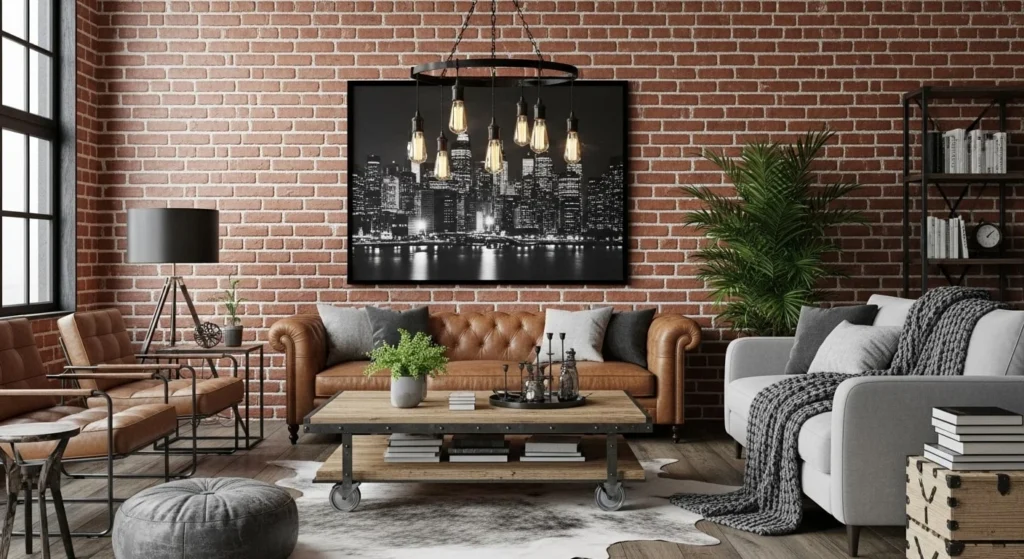9 Industrial Living Room Designs for a Chic Urban Vibe
Industrial living room designs captures the raw, edgy beauty of urban spaces while blending it with comfort and sophistication. Originating from converted warehouses and lofts, this style celebrates exposed brick walls, open layouts, visible beams, and a mix of metal and wood materials. The result is a space that feels bold, unpolished, and effortlessly cool—perfect for city living or anyone wanting to bring metropolitan charm into their home. These 9 industrial living room ideas will help you strike the right balance between rugged character and modern chic.
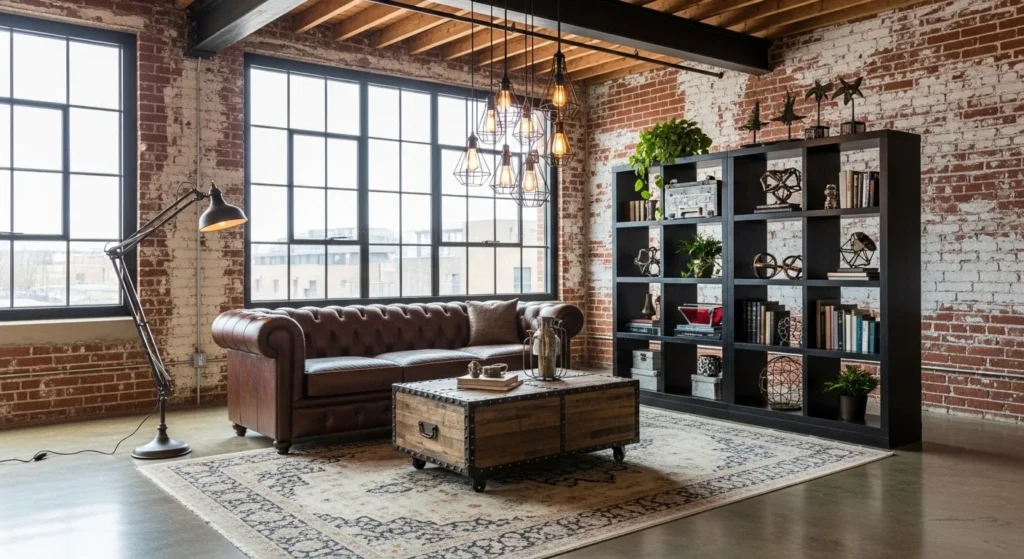
Idea 1: Showcase Exposed Brick Walls
Why it works: Brick adds instant industrial character, giving the room texture, depth, and warmth.
How to do it:
- Keep the brick in its natural red-brown tone for authenticity.
- For a softer look, whitewash the brick while letting some texture show through.
- Pair with black metal furniture and neutral textiles for contrast.
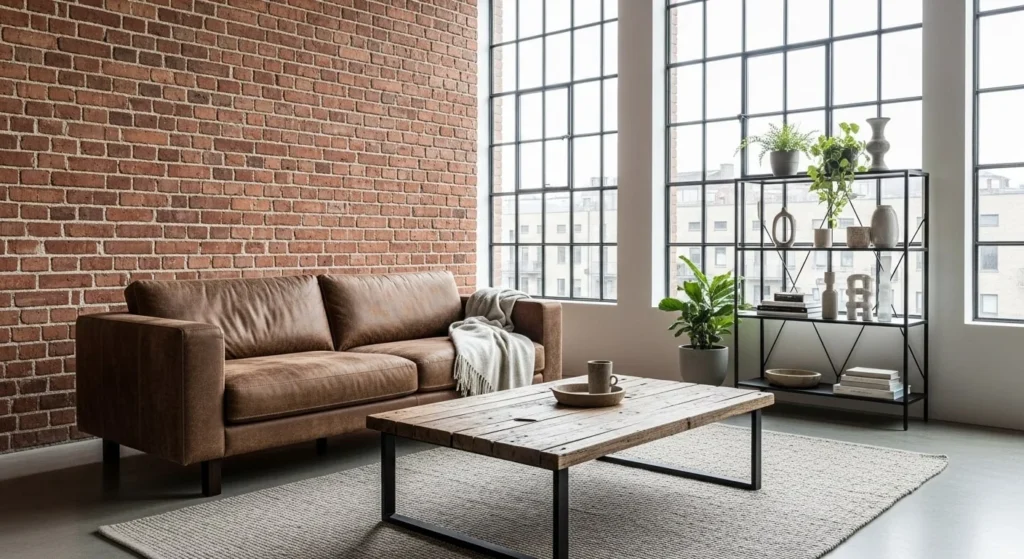
Budget tip: If you don’t have real brick, try high-quality brick veneer panels or realistic peel-and-stick wallpaper.
Idea 2: Use an Open-Concept Layout
Why it works: Industrial style thrives in airy, loft-like spaces that feel connected.
How to do it:
- Arrange furniture to define zones without blocking sightlines.
- Use open shelving or metal-framed partitions instead of full walls.
- Keep pathways clear to maintain a sense of flow.
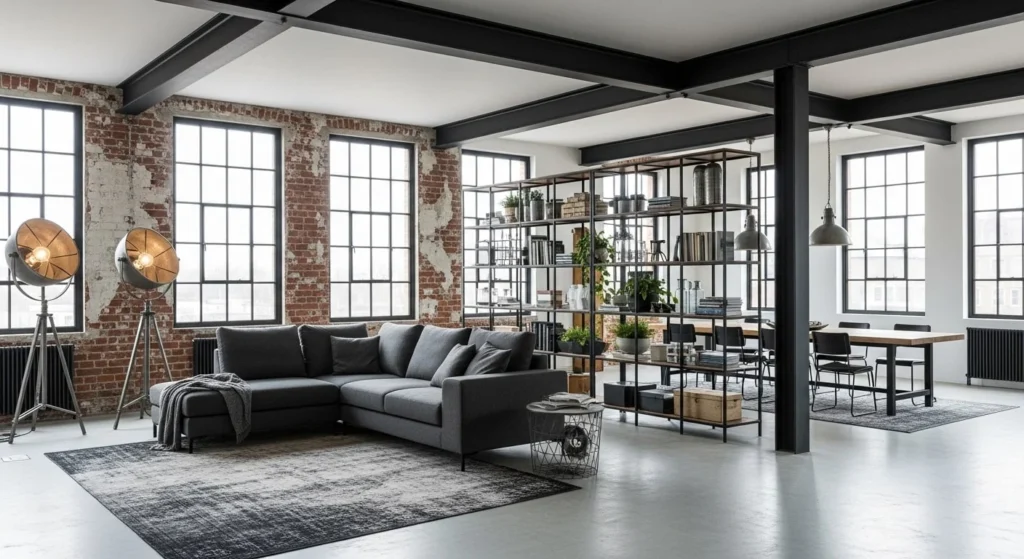
Budget tip: Reposition furniture and use rugs to visually separate living areas without structural changes.
Idea 3: Incorporate Raw Materials
Why it works: Industrial design celebrates unfinished textures and authentic materials.
How to do it:
- Mix reclaimed wood, steel, concrete, and leather.
- Opt for a concrete coffee table, steel bookshelves, or a reclaimed wood console.
- Keep finishes matte or weathered—avoid overly polished surfaces.
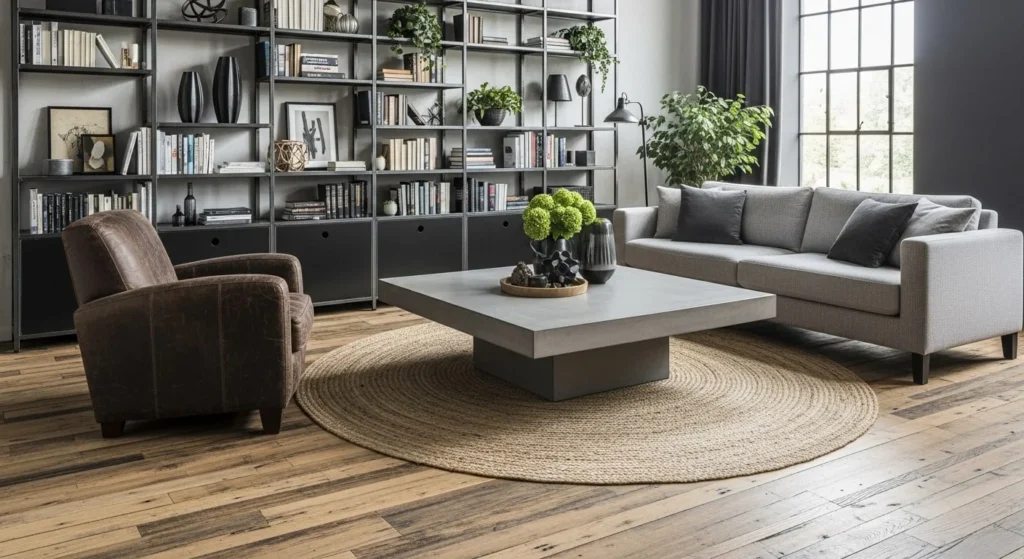
Budget tip: DIY a coffee table from reclaimed pallets and add metal casters for an authentic touch.
Idea 4: Embrace Dark, Moody Color Palettes
Why it works: Deep tones complement industrial materials and create a cozy, urban atmosphere.
How to do it:
- Base colors: charcoal gray, matte black, deep brown, and rusty orange.
- Accent with warm metallics like bronze or copper.
- Balance with lighter elements—like a cream rug or white ceiling—to prevent the room from feeling too heavy.
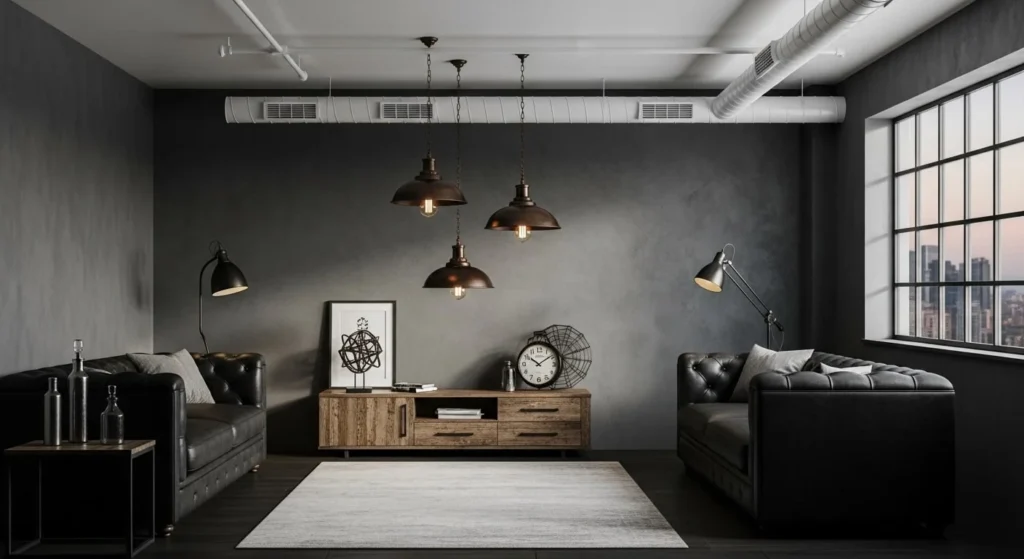
Budget tip: Paint a single feature wall dark gray or black to test the vibe before committing fully.
Idea 5: Add Statement Lighting
Why it works: Industrial lighting blends function and style, often becoming a focal point.
How to do it:
- Use pendant lights with exposed bulbs, metal cages, or matte black finishes.
- Install a chandelier made of pipes or reclaimed materials for drama.
- Layer lighting: overhead pendants, wall sconces, and floor lamps.
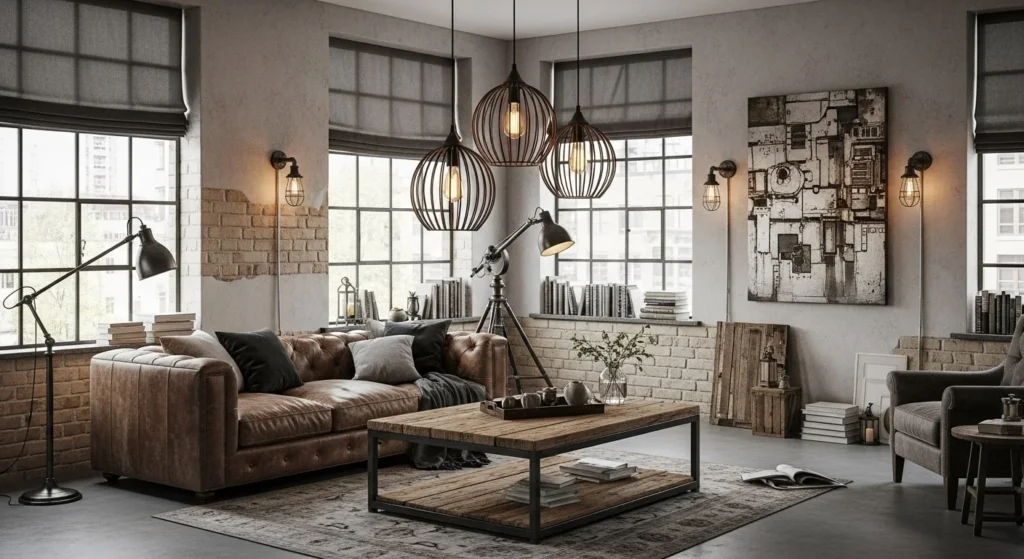
Budget tip: Replace just one light fixture—like your coffee table pendant—for an instant industrial upgrade.
Idea 6: Highlight Metal Accents
Why it works: Metal brings the sleek, urban edge that defines industrial interiors.
How to do it:
- Opt for black steel shelving, iron table legs, or bronze light fixtures.
- Mix warm metals (brass, copper) with cool ones (steel, chrome) for depth.
- Use metal-framed mirrors to add both style and light reflection.
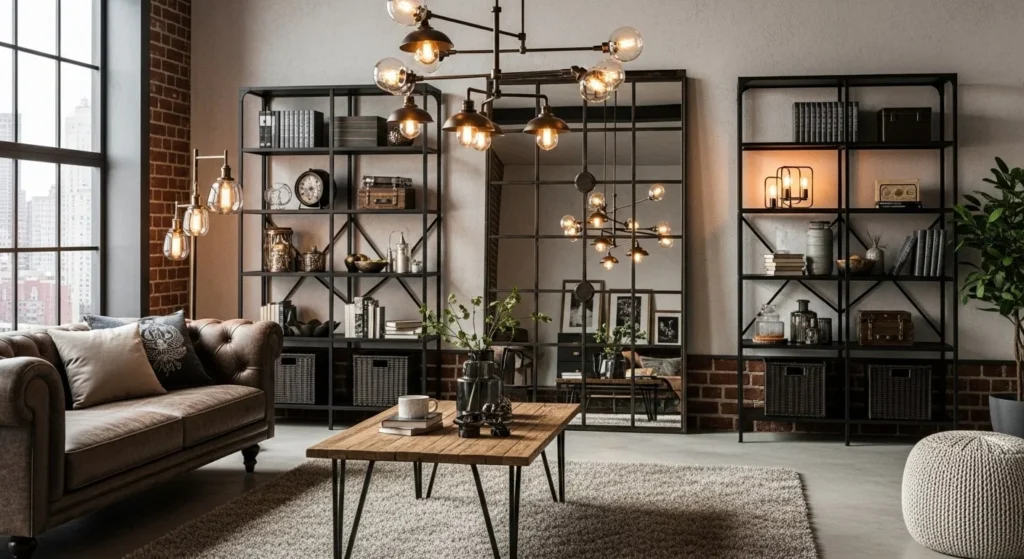
Budget tip: Swap in metal drawer pulls and cabinet handles for a subtle industrial nod.
Idea 7: Mix Vintage and Modern Pieces
Why it works: The charm of industrial design lies in its blend of old and new.
How to do it:
- Pair a sleek modern sofa with a weathered leather armchair.
- Combine a vintage trunk as a coffee table with a contemporary metal floor lamp.
- Hunt thrift stores or flea markets for unique, timeworn finds.

Budget tip: Repurpose old furniture—sand and stain a wood piece, add metal details.
Idea 8: Layer Textures for Comfort
Why it works: Industrial interiors can feel cold without soft layers to balance the raw materials.
How to do it:
- Add chunky knit throws, cowhide rugs, or linen cushions.
- Mix smooth leather with rough wool for tactile contrast.
- Incorporate large plants for organic softness.
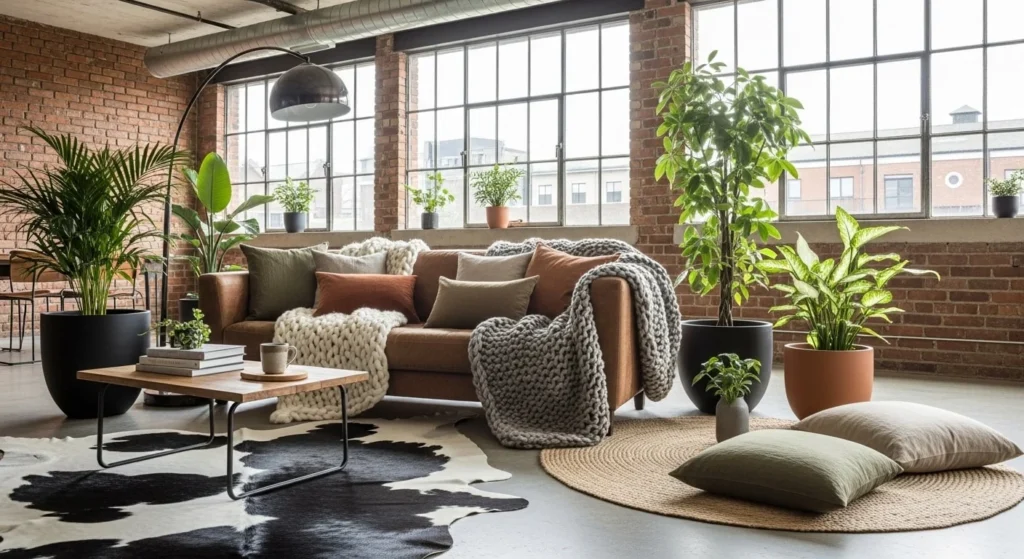
Budget tip: Start with textiles—new cushion covers, a soft rug, and a throw can instantly warm the space.
Idea 9: Showcase Industrial Art & Decor
Why it works: Art and accessories personalize the space without cluttering it.
How to do it:
- Hang large-scale black-and-white photography or abstract metal wall sculptures.
- Use oversized clocks, vintage signs, or blueprints as focal points.
- Display decor sparingly—quality over quantity.
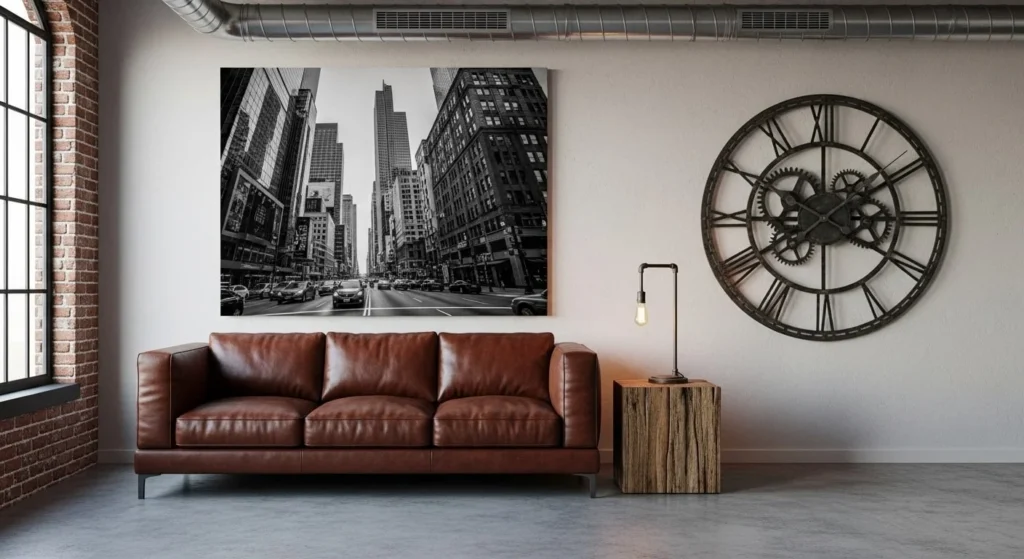
Budget tip: Print black-and-white cityscape photos and frame them in thin black metal frames for a cohesive look.
Conclusion
An industrial living room is more than just a design choice—it’s a lifestyle statement that blends urban grit with sophisticated comfort. By combining raw materials, bold lighting, vintage finds, and carefully chosen textures, you can create a space that feels authentically chic and inviting. Whether you live in a downtown loft or a suburban home, these nine ideas can help you channel that unmistakable urban vibe, turning your living room into a stylish retreat with plenty of personality.
